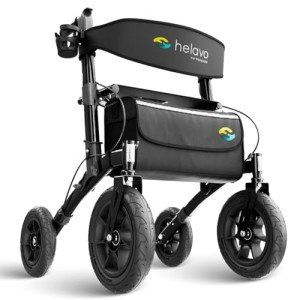The Stability of 4-Wheel Walkers: A Comprehensive Guide
A stable 4-wheel walker can transform mobility for individuals experiencing obstacles with balance and coordination. These devices, often called rollators, can be necessary tools in gaining back independence for those recuperating from surgical treatment, getting rid of age-related limitations, or managing chronic conditions. This blog site explores the features, benefits, and factors to consider one need to bear in mind when selecting a 4-wheel walker, supplemented with useful tables and a Frequently Asked Questions (FAQ) area to enhance understanding.
Why Choose a 4-Wheel Walker?
A 4-wheel walker uses numerous advantages over conventional walking aids, such as canes or walkers with only two wheels. Below are some of the essential advantages:
Benefits of a 4-Wheel Walker
| Advantage | Description |
|---|---|
| Enhanced Stability | The four wheels offer a stable base, enabling simpler navigation throughout various surfaces. |
| Improved Mobility | The designs are typically lighter and easier to maneuver, enabling users to move with confidence. |
| Integrated Sit-Down Feature | Numerous 4-wheel walkers featured an integrated seat, offering users the alternative to rest when needed. |
| Storage Options | Most walkers include storage bags or baskets for individual products, increasing freedom for users. |
| Adjustable Height | Numerous models use height adjustments to accommodate numerous user heights, offering convenience throughout usage. |
| Braking System | Many walkers come equipped with hand brakes, allowing the user to firmly stop and lock the walker in place. |
Types of 4-Wheel Walkers
4-wheel walkers can be found in numerous styles and functionalities to deal with different user requirements. Below is a categorized table:
| Type | Description |
|---|---|
| Standard Rollators | Standard designs created for basic mobility. Typically lightweight and foldable. |
| Heavy-Duty Rollators | Designs built to support bigger weights (up to 500 lbs or more). Suitable for much heavier users. |
| Double Brake Rollators | Deal both hand brakes and parking brakes for boosted safety, specifically helpful for elderly users. |
| Folding Walkers | Compact designs that easily fold for transport and storage. Perfect for those who travel or have actually limited area. |
| Specialized Rollators | Equipped with unique features such as integrated lights, larger seats, or specific styles for specific conditions like arthritis. |
Key Features to Consider
When picking a stable 4-wheel walker, it is crucial to choose a model that fits the user's requirements. Here are some vital features to consider:
- Weight Capacity: Always examine the maximum weight limit.
- Height Adjustability: Ensure that it can be adapted to suit the user's height.
- Wheel Size: Larger wheels provide better ability over rough terrains, while smaller sized wheels are great for indoor use.
- Seat Height and Comfort: If the model consists of a seat, examine its height and cushioning.
- Braking Mechanism: Look for reliable brakes that are easy to run.
- Ease of Folding: Users need to quickly fold and unfold the walker for transport.
- Storage Solutions: Evaluate storage choices like seat pouches and under-seat baskets.
- Product and Durability: Consider walkers made with durable products to ensure longevity.
Popular Models on the Market
Here's a selection of popular designs currently readily available, showcasing their unique features and specs:
| Model | Weight Capacity | Seat Height | Features |
|---|---|---|---|
| Drive Medical Nitro | 300 pounds | 23.5" | Lightweight, easy-to-fold design, large wheels. |
| Medline Ultralight | 300 lbs | 23" | Integrated seat, adjustable manages, storage pouch. |
| Nova Zoom 4 | 300 lbs | 22-24" | Dual brakes, padded seat, easy to fold. |
| INFANT JOY 4-Wheel | 300 pounds | 20-23" | Lightweight aluminum frame, storage basket, ergonomic manages. |
How to Use a 4-Wheel Walker
Knowing how to utilize a 4-wheel walker effectively is necessary for making the most of safety and mobility. Here's a detailed guide:
- Position the Walker: Stand behind the walker, with the handlebars at hip height.
- Adjust for Comfort: Make sure the height fits your comfort for standing and walking.
- Engage Brakes: Before sitting, engage the brakes to ensure the walker does not move.
- Advance: Move the walker forward, guaranteeing all four wheels are in contact with the ground.
- Stroll Naturally: Use a natural walking rhythm, moving the walker forward and stepping the system as required.
- Rest: When fatigued, locate a seat on the walker, engage the brakes, and sit comfortably.
FAQ
1. What is the perfect height for a 4-wheel walker?
- The handlebars need to be at waist level when the person is standing directly. Most walkers provide adjustable heights to accommodate this.
2. Can a 4-wheel walker be used outdoors?
- Yes, numerous models are developed for outdoor usage, including bigger wheels for much better navigation over unequal terrains.
3. How do you maintain a 4-wheel walker?
- Frequently examine the wheels, brakes, and frame for wear and tear. Clean surfaces to eliminate debris, and ensure the brakes function properly.
4. Are there insurance coverage benefits for purchasing a 4-wheel walker?
- Numerous insurance coverage strategies cover walkers if recommended by a doctor. Constantly check your specific plan information.
5. What is the average cost of a 4-wheel walker?
- Costs may differ widely, from around ₤ 50 for standard models to over ₤ 300 for advanced styles.
A stable 4-wheel walker can significantly contribute to an individual's mobility, self-confidence, and lifestyle. By considering just click the next web page , types, and perfect usage techniques talked about above, people can make informed choices that best match their needs. Whether it's for healing, aging, or handling ongoing health conditions, picking the best walker can lead to a healthier and more active lifestyle.

